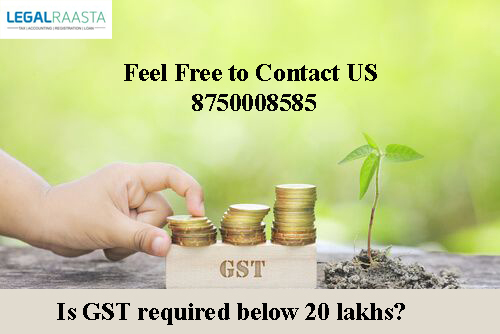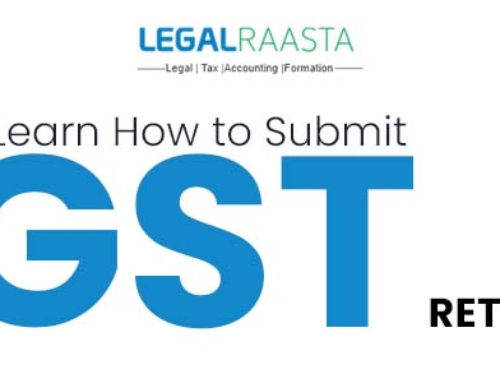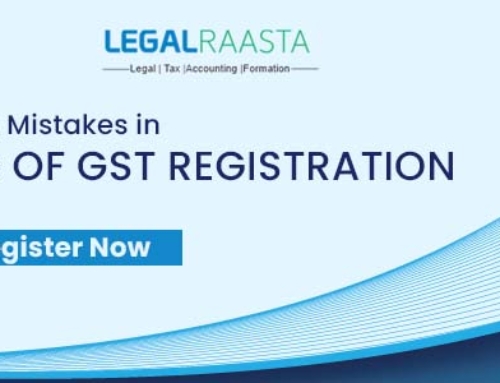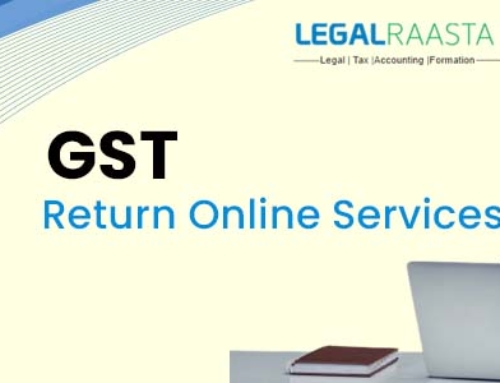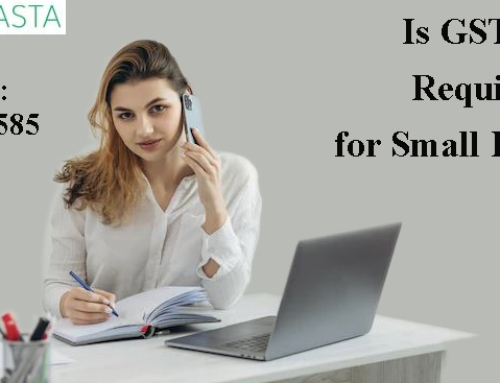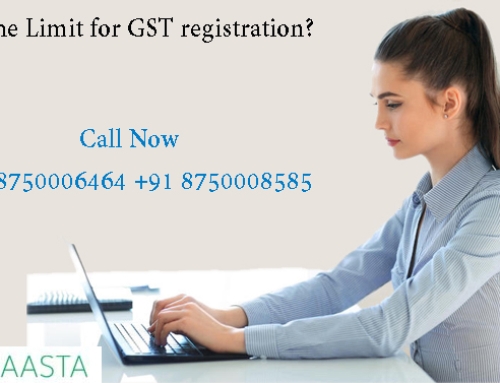GST is a tax that is viewed as a modification to the taxing process. A common national market could result from the integration of several different central and state taxes under the GST. While state-by-state VAT rates vary, the global GST rate is uniform and stable. In this case, the Central and State governments would split the tax. According to the GST Regime, companies or business owners whose annual revenue surpasses Rs. 40 lakhs must register with the GST as a regular taxable person. For services provided in the NE and hill states, the GST registration threshold limit is Rs. 10 lakhs. GST registration is the procedure for becoming registered under the GST Regime. For practically all businesses, GST registration is required. According to GST regulations, it is an offence for a firm or business to conduct business operations without being registered for GST, and severe fines will be imposed. Therefore, we will discuss the GST Registration Threshold restrictions, whether it is required to register the GST below 20 lakhs, and the individuals or businesses to which it applies in this post.
Exactly what do New GST Filing Threshold Limits mean?
Contents
A company must compulsorily register for the Goods and Services Tax if its total annual revenue reaches Rs 20 lakhs. For North Eastern and hilly states designated as special category states, this cap is fixed at Rs 10 lakhs. The CBIC announced an increase in the business threshold from Rs 20 lakh to Rs 40 lakh. The GST Council enhanced the threshold turnover limitations of hits GST registration after taking into account the demands made by MSME. The threshold turnover limitations have been raised, which makes it easier to comply with the GST regime. The states have an opportunity to choose to stay with the existing restrictions or to a higher limit. Any other person or class of people that the Central Government or a State Government may notify is required to register, depending on the recommendations of the GST Council. For assesses with a turnover of less than 20 lakhs, GST is not applicable. The online GST Filing Process requires 2 to 6 working hours, but LegalRaasta can assist you in completing your GST filing in only 3 simple steps.
GST Cap for Different Goods Taxpayers
For Normal Taxpayer:Under the initially announced GST regime, the threshold limit for the provider of products was set at Rs. 20 lakhs. To be more specific, providers or dealers of commodities with a yearly turnover of up to Rs 20 Lakhs are exempt from the GST regime’s registration requirements. Suppliers or dealers of products must therefore compulsorily register under the GST if their threshold turnover exceeds Rs 20 lakh. However, the 32nd GST Council meeting quadrupled this exemption threshold annual cap from Rs. 20 lakhs to Rs. 40 lakhs.
For Special Category States: According to the 32nd GST Council meeting, the threshold limit for this State’s supply of commodities has increased from Rs. 10 lakhs to Rs. 20 lakhs. However, firms in the north-eastern and hilly regions had a choice as to whether their annual revenue would be subject to the GST exemption threshold of Rs. 20 lakhs or Rs. 40 lakhs. Assam, Jammu and Kashmir, Meghalaya, and other Special Category States were included in the former GST registration threshold limit for north-eastern and mountainous states of Rs. 10 lakhs.
GST Registration Limit for Services
Normal Taxpayer: The original GST structure announced by the government in July 2017 stated that the turnover limit for service suppliers was Rs. 20 lakhs, excluding the special category states. However, this exemption amount for service providers from GST, which is set at Rs. 20 lakhs, remains the same as it was announced at the 32nd GST Council Meeting.
Special Category States: During the first iteration of the GST, service providers in hilly and North Eastern states were only eligible for an exemption up to a maximum of Rs. 10 lakhs. This exemption amount, however, remains unchanging; as of the 32nd GST Council Meeting, it is Rs 10 lakhs.
Composition Scheme Registration Limit
Traders and Manufacturers: All producers and traders who had a prior financial year annual turnover of up to Rs 1 Crore were eligible to register as composition dealers under the GST law. These producers and traders are subject to a 1% GST tax. However, as stated in the 32nd GST Council Meeting, the GST Registration Limit for traders and manufacturers registered under the category of composition dealers has increased. Manufacturers and traders can therefore register under GST as composition dealers if they had a cumulative annual revenue of up to Rs 1.5 Crores in the last financial year. However, the 1% GST charge still applies to these manufacturers and traders.
Restaurant Service: According to the GST law, only service providers, such as restaurants, who had a combined revenue of up to Rs 1 Crore the prior fiscal year were eligible to register for GST. The percentage of these service providers where the Goods and Services Tax was applied hit and missed was 5%. However, as stated at the 32nd GST Council Meeting, the GST Registration Limit for Restaurant Service Providers Registered as Composition Dealers has also been enhanced. Restaurant service providers can now register under GST as composition dealers if they have a combined annual sale of up to Rs 1.5 Crores in the last financial year. Additionally, the GST rate of 5% that was already applied to certain restaurant service providers remains the same.
Other Service Providers: Under the initial GST framework, service providers could not choose a composition dealer if they did not supply services to restaurants. A new composition scheme, with a tax rate of 6%, will however, be made accessible for mixed suppliers and service providers as of the 32nd GST Council Meeting. Additionally, these service providers must have achieved the minimum annual sales of Rs. 50 lakhs in the Financial Year before.
Mandatory Registration for GST Reporting
- People or organizations that engage in interstate taxable supply.
- People who must pay tax under the casual taxable.
- People who must pay tax under the reverse charge.
- People who must pay taxes under section 9’s subsection (5).
- Taxable for non-residents Individuals.
- Those who must pay TDS (Tax Deducted at Source) in accordance with section 51. Whether the Individuals are individually registered under the Act or not, and regardless of whether they are separately registered under the Act, this is inappropriate.
- Distributor of input services, whether or not individually registered under the Act.
- individuals who, either as agents or otherwise, make taxable supplies of goods or services on behalf of other taxable individuals.
States that will accept the new GST Registration Limit
| States threshold limit of Rs 10 lakhs accepted | States threshold limit of Rs 20 lakhs accepted | States threshold limit of Rs 40 lakhs accepted |
| Mizoram | Puducherry | Remaining 21 States and 5 Union Territories |
| Manipur | Meghalaya | |
| Tripura | Arunachal Pradesh | |
| Nagaland | Sikkim | |
| Telangana
|
||
| Uttarakhand
|
Conclusion
Indirect taxes in India include the Goods and Services Tax. In accordance with the GST legislation, a business that meets specific requirements must apply for GST registration. Online compliance and strong integration are features of the goods and services tax system. In addition, it is one of the tax systems that is utilized the most, with 2-4 returns being filed on average each month. Automation is required to complete the process because of the compliance burden, and automation has always been closely related to technology, whether it be through government websites or otherwise. Technology has also considerably improved and advanced over time. GST registration is simple to complete with the assistance of LegalRaasta specialists. So, in this article, we’ve covered the various GST filing fees that various businesses must pay as well as whether or not paying the mandatory 20 lakhs is required.

